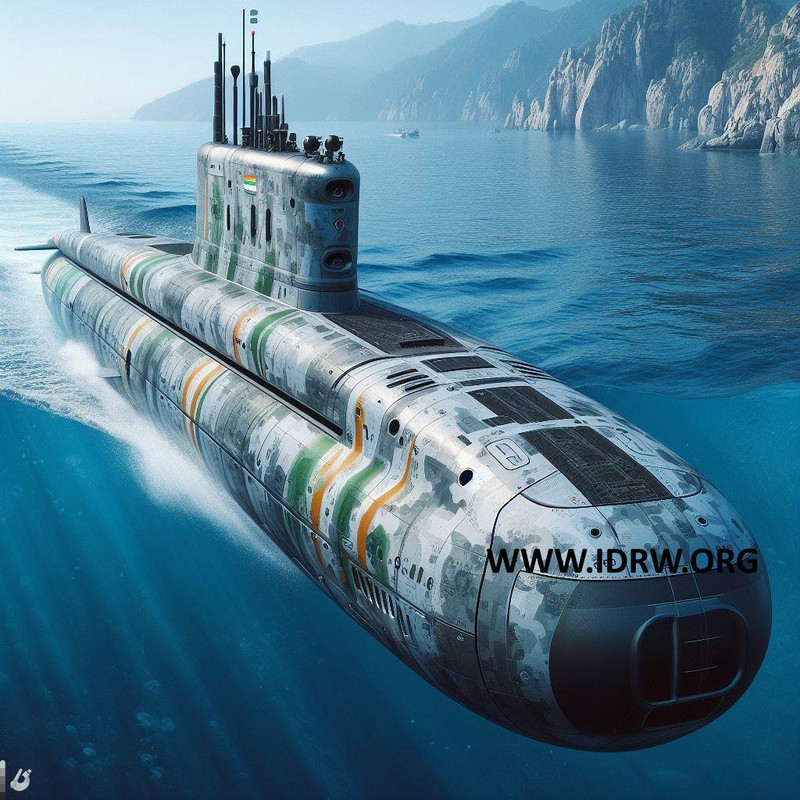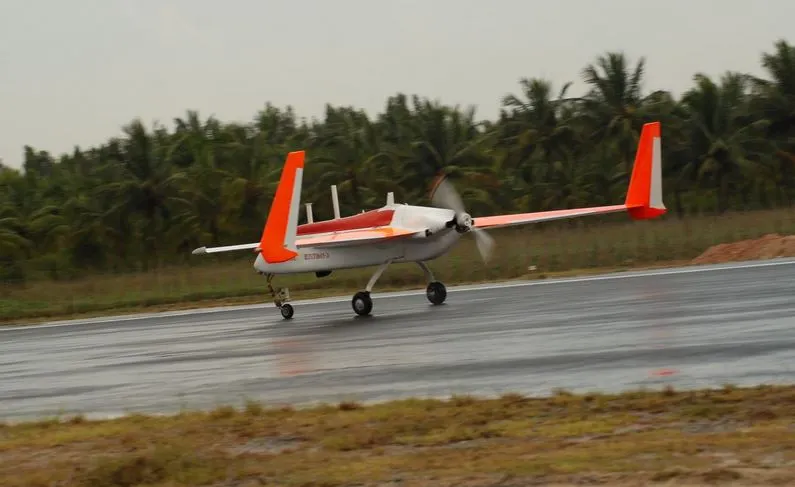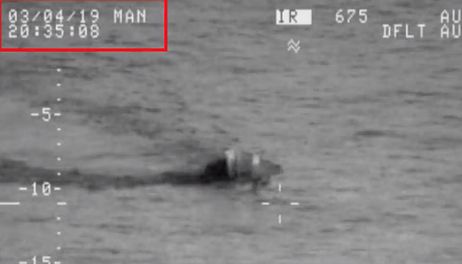SOURCE: RAUNAK KUNDE / NEWS BEAT / IDRW.ORG

In a significant development aimed at bolstering India’s submarine prowess, the Defence Research and Development Organisation (DRDO) and the Mazagon Dock Shipbuilders Limited (MDL) are set to engage in a competitive design race for the Indian Navy’s upcoming Project-76. This ambitious project envisions the procurement of 12 next-generation submarines in two phases of six each.
DRDO has received the green light to collaborate with the Indian Navy’s Warship Design Bureau (WDB) to develop a new indigenous conventional submarine design. Drawing inspiration from the successfully concluded SSN nuclear attack submarine’s design phase, DRDO’s design is expected to incorporate cutting-edge technology and advanced capabilities.
Continue readingSOURCE: RAUNAK KUNDE / NEWS BEAT / IDRW.ORG

Aeronautical Development Establishment (ADE) is actively exploring the possibility of offering its Archer Short Range Unmanned Aerial Vehicle (SRUAV) to fulfil the Indian Navy’s requirement for a Naval Aerial Robotic System (NARS). The NARS program seeks a modular UAV capable of operating from aircraft carriers, and the Indian Navy has tentatively expressed a need for 10 such systems.
The Archer SRUAV, renowned for its versatility and endurance, is being considered as a potential candidate. However, to adapt to the demanding career environment, significant modifications would be necessary. These include incorporating folding wings to optimize deck space and reinforcing the undercarriage to withstand the rigors of carrier landings.
Continue readingSOURCE: RAUNAK KUNDE / NEWS BEAT / IDRW.ORG

In a bid to bolster its fighter jet fleet amidst ongoing shortages, the Indian Air Force (IAF) has decided to extend the service life of its MiG-29UPG fighter jets. The service branch plans to implement a second life extension program to increase the operational lifespan of these aircraft from 40 to 50 years.
Originally slated for retirement in 2027, the MiG-29UPG fleet will now remain in service until 2035. This decision comes in response to the IAF’s pressing need for fighter aircraft, as the induction of the Tejas MkII, its intended replacement, is facing delays.
Continue readingSOURCE: AFI

The Defence Research and Development Organisation (DRDO) is actively working on developing Fluidic Thrust Vectoring (FTVC) technology for its upcoming Ghatak Unmanned Combat Aerial Vehicle (UCAV) program. The Ghatak, a 13-ton autonomous fighter bomber, is a significant project aimed at enhancing India’s military capabilities.
FTVC offers a unique approach to aerodynamic control, overcoming some of the limitations of traditional mechanical systems. One method, known as shock vector control, involves injecting a fluid into the exhaust nozzle of an engine to redirect the gases and generate a control force.
Continue readingSOURCE: AFI

The global fighter jet market has long been dominated by two major players: the United States and China. These two countries account for the majority of annual production, showcasing their technological prowess and manufacturing capabilities. However, the landscape is evolving, with several other nations poised to join the ranks of fighter jet producers.
Looking ahead to the next two decades, the forecast indicates that the US and China will maintain their lead in fighter jet production worldwide. Russia and Europe are expected to follow closely behind, solidifying their positions in the global market.
Continue readingSOURCE: AFI

The Indian Air Force (IAF) is reportedly considering acquiring additional C-295 medium tactical transport aircraft to supplement and eventually replace its fleet of Soviet-era AN-32 turboprop transport aircraft. According to sources close to the Hindustan Times, the IAF is drawn to the C-295’s capabilities and its potential to meet the service’s evolving requirements.
The C-295, with its 5-10-tonne payload capacity, offers a comparable capability to the AN-32, which has been a workhorse for the IAF. As the AN-32 fleet ages, the IAF plans to begin retiring these aircraft starting in 2030. The C-295, with its production line set to continue until around 2032, presents a viable replacement option.
Continue readingSOURCE: AFI

In a recent exchange on X (formerly Twitter), former Indian Navy Chief Admiral Arun Prakash and Vice Admiral Arun Kumar Singh have voiced their skepticism over claims made by Pakistan regarding a 2019 naval encounter. In March 2019, the Pakistan Navy claimed to have “detected and blocked” an Indian Navy submarine from entering Pakistani territorial waters. According to a Pakistani Naval P-3 pilot’s description, the submarine’s periscope was allegedly detected at a distance of 70 nautical miles, after which the submarine was “locked on” for an hour and 40 minutes. For this action, the officer was awarded the Tamgha-e-Basalat for “courage and valor.”
Vice Admiral Arun Kumar Singh, reacting to these claims, expressed disbelief at the Pakistani account. Drawing from his extensive experience commanding submarines and warships, Singh questioned the feasibility of detecting a submarine periscope at such a great distance. He stated, “A P-3 detecting a sub periscope at 70 nm and then locking on the sub for 100 minutes? Having personally commanded subs and warships, I wonder what he really detected and locked on to.” His comments reflect a deep skepticism about the technical plausibility of the Pakistani claims.
Continue readingSOURCE: IDRW.ORG TEAM

The Medium Machine Gun (MMG) MAG, manufactured by Small Arms Factory (SAF), a unit of Ordnance Factory Organization, Kanpur, is set to make its mark in the European market. Several European companies have expressed strong interest in acquiring these high-performance weapons.
The MAG gun, designed to serve as a medium machine gun, is known for its reliability and effectiveness. It is a fully automatic, air-cooled, belt-fed, gas-operated weapon capable of delivering sustained high rates of fire in bursts. The gun features an open breech design, preventing the risk of cartridge explosions (cook-offs) even after prolonged firing.
Continue readingSOURCE: IDRW.ORG TEAM

De Havilland Canada, a leading global aerospace company, is exploring the possibility of establishing a supplier base in India to support its aircraft platforms. The manufacturer of the iconic Twin Otter aircraft, which holds over 95% of the global seaplane market share, sees India as a significant growth market.
With more than 100 Twin Otter aircraft already deployed in the neighboring Maldives, De Havilland Canada anticipates significant growth potential in India. The company predicts the creation of 60-100 seaplane routes in the country over the next five years, requiring the development of approximately 30 aerodromes.
Continue readingSOURCE: AFI

The Defense Security Cooperation Agency (DSCA) has announced that the United States has approved the possible sale of three types of sonobuoys to India for its fleet of Sikorsky MH-60R multi-role helicopters.
The potential package, valued at $52.8 million, includes AN/SSQ-53G High Altitude Anti-Submarine Warfare (HAASW) sonobuoys, AN/SSQ-62F HAASW sonobuoys, and AN/SSQ-36 sonobuoys. The primary contractors for the sale are Sparton Corporation and Undersea Sensor Systems.
Continue readingSOURCE: AFI

PTC Industries Ltd, a leading player in the titanium industry, has announced the acquisition of a Hot Rolling Mill. This strategic move will enable the company to manufacture high-quality plates and sheets in titanium alloys, specifically designed for aerospace and defense applications.
The Hot Rolling Mill will be integrated with PTC’s upcoming Strategic Materials Technology Complex in Lucknow, which is part of the Uttar Pradesh Defence Industrial Corridor (UPDIC). This facility will produce titanium alloy ingots and billets, providing the raw material for the Hot Rolling Mill.
Continue readingSOURCE: AFI

The Indian Space Research Organisation (ISRO) is set to make history as it prepares to launch Vyommitra, a humanoid robot, into space. The mission’s primary objective is to assess the safety of spacecraft for future human spaceflight.
Designed and developed by ISRO’s Thiruvananthapuram unit, Vyommitra’s skull is a marvel of engineering. Weighing in at a mere 800 grams and measuring 200 mm x 220 mm, the skull is crafted from a high-strength aluminum alloy to withstand the extreme pressures and vibrations experienced during space travel.
Continue readingSOURCE: AFI

Paris-based technology giant Dassault Systèmes announced today that Magic Myna, an Indian manufacturer of customized drones, has adopted the company’s 3DEXPERIENCE platform on the cloud. Magic Myna is utilizing Dassault Systèmes’ applications to optimize the design and development of unmanned aerial vehicles (UAVs) for various applications, including healthcare, agriculture, and logistics.
The 3DEXPERIENCE platform provides a collaborative environment for design, simulation, and data management, enabling Magic Myna to accelerate product development cycles and improve product quality. The platform’s user-friendly interface and advanced simulation capabilities have allowed the company to develop lighter, more stable drones in a shorter amount of time.
Continue readingSOURCE: AFI

A Pakistani Air Force GID Shahpar-2 unmanned aerial vehicle (UAV) crashed in the central Punjab region on Saturday. The incident occurred during an experimental flight, according to a source within the Pakistani Ministry of Defence.
While the exact cause of the crash remains under investigation, no injuries were reported, and damage to the surrounding area was minimal. The UAV, a modified version of the Chinese CH-3A, was being evaluated by the Pakistani Air Force.
Continue readingSOURCE: RAUNAK KUNDE / NEWS BEAT / IDRW.ORG
The Indian Navy’s quest for enhanced underwater capabilities is taking a significant leap forward with the upcoming construction of two nuclear-attack submarines (SSNs). As the government prepares to greenlight the project, a crucial detail has emerged – the inclusion of pump-jet propulsion technology.
Pump-jet propulsion offers a significant advantage over traditional propellers. It reduces noise signature, making the submarines harder to detect by enemy sonar. Additionally, pump jets offer improved efficiency and manoeuvrability, making them ideal for navigating challenging underwater environments.
Continue reading